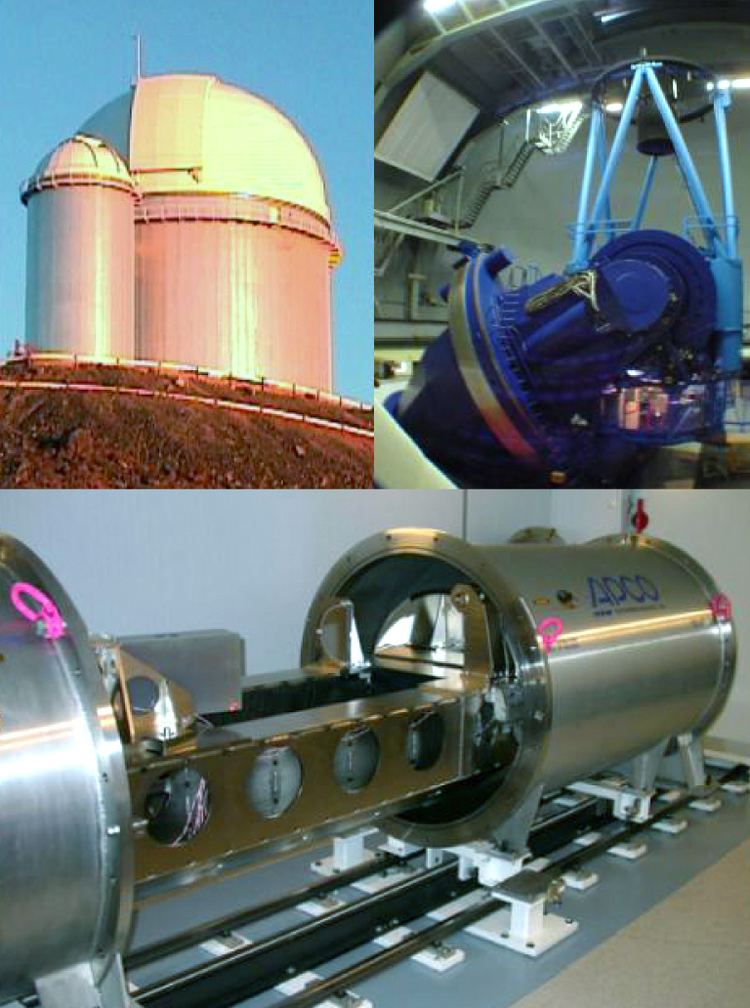 | ||
The High Accuracy Radial velocity Planet Searcher (HARPS) is a high-precision echelle planet finding spectrograph installed in 2002 on the ESO's 3.6m telescope at La Silla Observatory in Chile. The first light was achieved in February 2003. HARPS has discovered over 130 exoplanets to date, with the first one in 2004, making it the most successful planet finder behind the Kepler space observatory. It is a second-generation radial-velocity spectrograph, based on experience with the ELODIE and CORALIE instruments.
Contents
Characteristics
HARPS can attain a precision of 0.97 m/s (3.5 km/h), with an effective precision of the order of 30 cm s−1, making it one of only two instruments worldwide with such accuracy. This is due to a design in which the target star and a reference spectrum from a thorium lamp are observed simultaneously using two identical optic fibre feeds, and to careful attention to mechanical stability: the instrument sits in a vacuum vessel which is temperature-controlled to within 0.01 kelvins. The precision and sensitivity of the instrument is such that it incidentally produced the best available measurement of the thorium spectrum. Planet-detection is in some cases limited by the seismic pulsations of the star observed rather than by limitations of the instrument.
The principal investigator on HARPS is Michel Mayor who, along with Didier Queloz and Stéphane Udry have used the instrument to characterize the Gliese 581 system, home to one of the smallest known exoplanet orbiting a normal star, and two super-Earths whose orbits lie in the star's habitable zone.
It was initially used for a survey of a thousand stars.
Since October 2012 the HARPS spectrograph has the precision to detect a new category of planets: Habitable super-Earths. This sensitivity was expected from simulations of stellar intrinsic signals, and actual observations of planetary systems. Currently, HARPS can detect habitable super-Earth only around low-mass stars as these are more affected by gravitational tug from planets and have habitable zones close to the host star.
